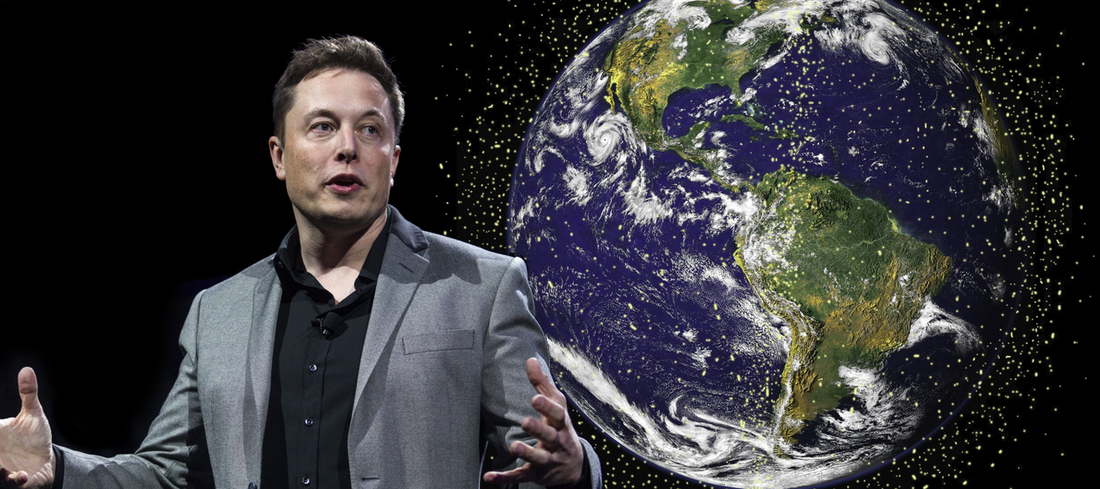
NASA Needs Your Help Narcing on SpaceX
Share
Many have had their reservations about SpaceX's innovative/extreme means of providing the world with accessible, high-speed broadband known as Starlink.
Starlink is a large satellite constellation orbiting the Earth with the task of providing us with unheard-of convenience in internet usage, especially in the NBN-sour parts of Australia.
Over the coming years, thousands of satellites will add to the several hundred already in the sky and NASA wants your help in bringing them down.
The satellites have been 'corrupting' the imagery of major telescopes an observatories with streaks of light reflecting off the satellites.
Below is an image taken by the Lowell Observatory, Arizona from May 25 last year that illustrates the type of streaks taking place in their field of view.

Over the next few years, thousands of SpaceX satellites will join their brethren in low-orbit and NASA educators feel the issue will only grow worse.
Russian astronomers have already taken the issue up with the United Nations, however, NASA has a different plan altogether, a project named: Satellite Streak Watcher.
Sten Odenwald of the NASA Space Science Education Consortium has said of the project:
"People will photograph these Starlink satellite streaks, and we'll collect a large archive of these over time. It is going to document the degradation of our night sky by these low-Earth orbit satellites."
A rather damning assessment.
Folk who engage with NASA on social media have already begun the collection of photographic evidence with some claiming:
"I was just out this morning in Washington DC around 5:30am and did some photography. They (Starlink) are brighter than any satellites I've ever seen in my lifetime..."

Almost immediately after launch, astrophotographers both professional and amateur were lighting up (pun intended) at the sight of the Starlink streaks in the sky.
The streaks are most prominent after launch when the 'train' of satellites are still bunched together, like a string of pearls in the sky.
Many satellites are visible from Earth in the hours following sunset and preceding sunrise as the angle of the light still hits the satellite yet the backdrop of night is still present.
With the close proximity of the Starlink satellites to one another, it makes for a very harrowing image for photographers and astronomers alike.
Elon Musk's dream for global coverage of the internet has some pretty shifty prerequisites, at least NASA thinks so...
One, satellites must maintain a shallow orbit (not good for telescopes and cameras).
And two, there must be thousands of them to provide global coverage.
By thousands, we mean around 40,000...
And the hubbub is only after SpaceX has marked their 2000th satellite in orbit.

"The problem is made worse because the satellites are in low_earth orbit," continued Odenwald. "They're brighter because they're lower. And because there are so many of them, it means (astronomers) get maybe as much as an hour of bright streaks going across their sensitive photographic detectors."
The fears of NASA are not entirely preoccupied with SpaceX, but for the change of satellite infestation over time as other large organisations such as Amazon have intentions of launching satellites.
With astronomers already having to move their observatories to remote locations, costing millions upon millions of dollars, there is no hope for them to fight his type of light pollution that comes from above.
To their credit, Starlink and Elon Musk have made mention of trying a newer design with low-reflectivity materials.
However, the reflectivity of light is what helps the craft stay cool, as the reflection of light means it is not absorbed by the satellite itself.

To take pictures of the Starlink satellites overhead, firstly head to Heavens-Above.com and enter your location to see if/when they will be passing over.
Next, set up your phone - preferably post 2016 at least - on a tripod in the designated direction and set the long exposure setting to the sky for calibration.
If step two is not providing a clear image, try holding the camera up to a telescope eyepiece.
Now, wait for the satellite constellation to appear.
To upload simply go to the Satellite Streak Watcher project website and include your exposure and the background constellation.
NASA representatives attest there is no clear end goal to the Streak Watcher project, more so to follow the progress of satellite light pollution over time.
The amount of data that could be lost from the world's most powerful telescopes would be devastating, says NASA.
"We could have 5,000 to 10,000 of these satellites buzzing around low-Earth orbit at some point. You could do before and after photos to show how much more annoying the sky is than it used to be."
Where do you stand on the Starlink controversy:
Hooray for internet or Boo for light pollution?
#Space_Aus




